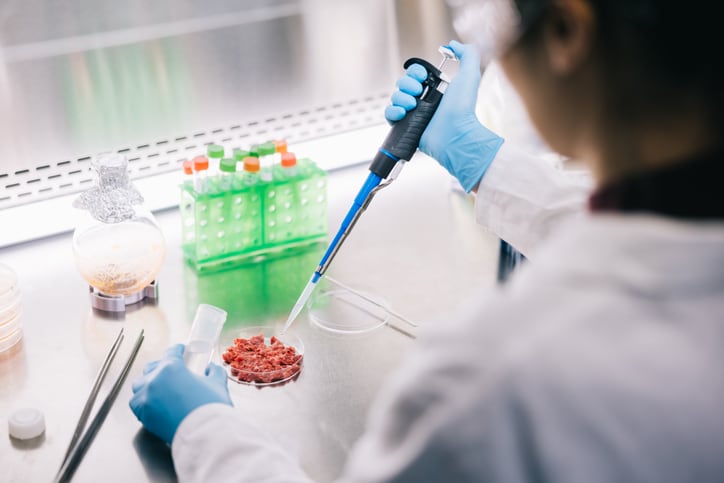The regulator has published a second call for public comments on the proposed changes. The deadline for submissions is September 10, 2024 at 6pm Canberra time.
These changes will affect how GM foods are defined in the Australia New Zealand Food Standards Code (the Code).
A new Code definition for GM foods is necessary to ensure regulation keeps pace with new techniques for genetic modification, collectively referred to as NBTs, said FSANZ CEO Dr Sandra Cuthbert.
NBTs include genome editing, cisgenesis, and intragenesis. As genetic modification technology is still evolving, NBTs also include techniques that may emerge in the future.
NBTs can introduce a wide variety of genetic modifications, including changes that are like those from conventional breeding. This means a clear distinction between GM techniques and conventional breeding no longer exists based on current definitions.
Outcomes from the first call for submission of public comments
FSANZ had proposed a hybrid of product-based and process-based elements. This was during the first call for submission of public comments, which ended in December 2021.
The general feedback was this approach was overly complex, open to misinterpretation and may also to lead to regulatory outcomes that would be inconsistent with FSANZ’s own safety assessment. BASF and CSIRO were among those who provided this feedback.
FSANZ therefore proposed to focus on the presence of novel DNA as an outcome, i.e. product-based; rather than changes to the food itself, i.e. process-based.
“Moving to an outcomes-based approach based on the presence of novel DNA in the organism from which the food for sale is derived provides a clear and objective measure to determine if a food is a GM food for Code purposes. Novel DNA is either present in the organism or it is not. This will assist product developers to comply with the Code and jurisdictions to implement, interpret and enforce Code requirements,” said FSANZ.
Under the proposed changes, certain foods produced via new breeding techniques (NBTs) would be exempt from pre-market assessment and approval as GM foods.
“Our assessment has concluded that when a food derived using NBTs is equivalent in its characteristics to food derived through conventional breeding, it also presents the same low risk. Because of this low risk, a pre-market safety assessment by FSANZ is not needed, and such food should therefore not be GM food for Code purposes,” said FSANZ in its second call for submissions on 30 July 2024.
This new approach to defining GM foods will offer flexibility to address technology developments and new breeding techniques.
It is also stable with the definition less likely to become outdated because it is not based on a specific technique or technology.
Lastly, this approach considers the risk that comes with genetic modifications. This is because the transferred DNA may encode a novel protein, or other substance, and may not have a safe history of use in food.
Additionally, FSANZ stands by its conclusion from the first call for submission that certain NBT foods and refined ingredients will be equivalent in risk to conventional foods.
Thus, these NBT foods should not require pre-market assessment and approval as GM foods under the Code.
The key finding from FSANZ’s safety assessment was that some NBT foods and refined ingredients will be similar, and sometimes identical, in their product characteristics to conventional food. When NBT food and refined ingredients are equivalent to conventional food in terms of their characteristics they can also be considered to present the same low risk.
Based on this assessment, FSANZ concluded there would be justification in excluding the following food categories from pre-market safety assessment and approval as GM foods under revised definitions: food from null segregant organisms, NBT food with equivalent product characteristics to conventional food, and refined ingredients where no novel DNA or novel protein is present in the food for sale.
Additionally, several submitters, such as BASF, suggested FSANZ should base the revised definitions on the presence of foreign DNA.
They suggested that “foreign DNA means the stable integration into the genome of one or more genes that originate from outside the organism’s cross-compatible gene pool and are inaccessible through conventional methods”.
While the suggested ‘foreign DNA’ definition adequately conveys its meaning to those who are knowledgeable in plant breeding, FSANZ did not consider it suitable as a legal definition that could be readily interpreted and enforced.
Additionally, the definition of ‘novel DNA’ must also cover other important factors, such as including genetic changes made through NBTs like transgenesis and intragenesis. It should also account for DNA that has been artificially created and doesn’t come from any natural or existing DNA sequence.
FSANZ is therefore proposing the following definition for ‘novel DNA’:
“A person has inserted into the genome of an organism, cell or cells; and is from a species that has not previously been crossed or hybridised with the species of the organism, cell or cells; or from a species that has previously been crossed or hybridised with the species of the organism or cells, where the sequence or arrangement of the inserted DNA was changed prior to its insertion; or not from an existing species.”
Concerns
Consumer advocacy groups such as Friends of the Earth (FoE) and Gene Ethics (GE) have raised concerns about the safety of NBT foods. They proposed that all NBT foods should undergo rigorous testing, including animal feeding studies, human trials, and whole genome sequencing, to ensure their safety.
FSANZ, however, maintains that extensive testing is not necessary for foods derived from NBTs that are equivalent to those produced by conventional breeding or natural processes. The agency asserts that such foods are as safe as conventional foods, which have undergone substantial genetic changes over time and are widely accepted as safe.
More information on the proposal can be accessed here.




